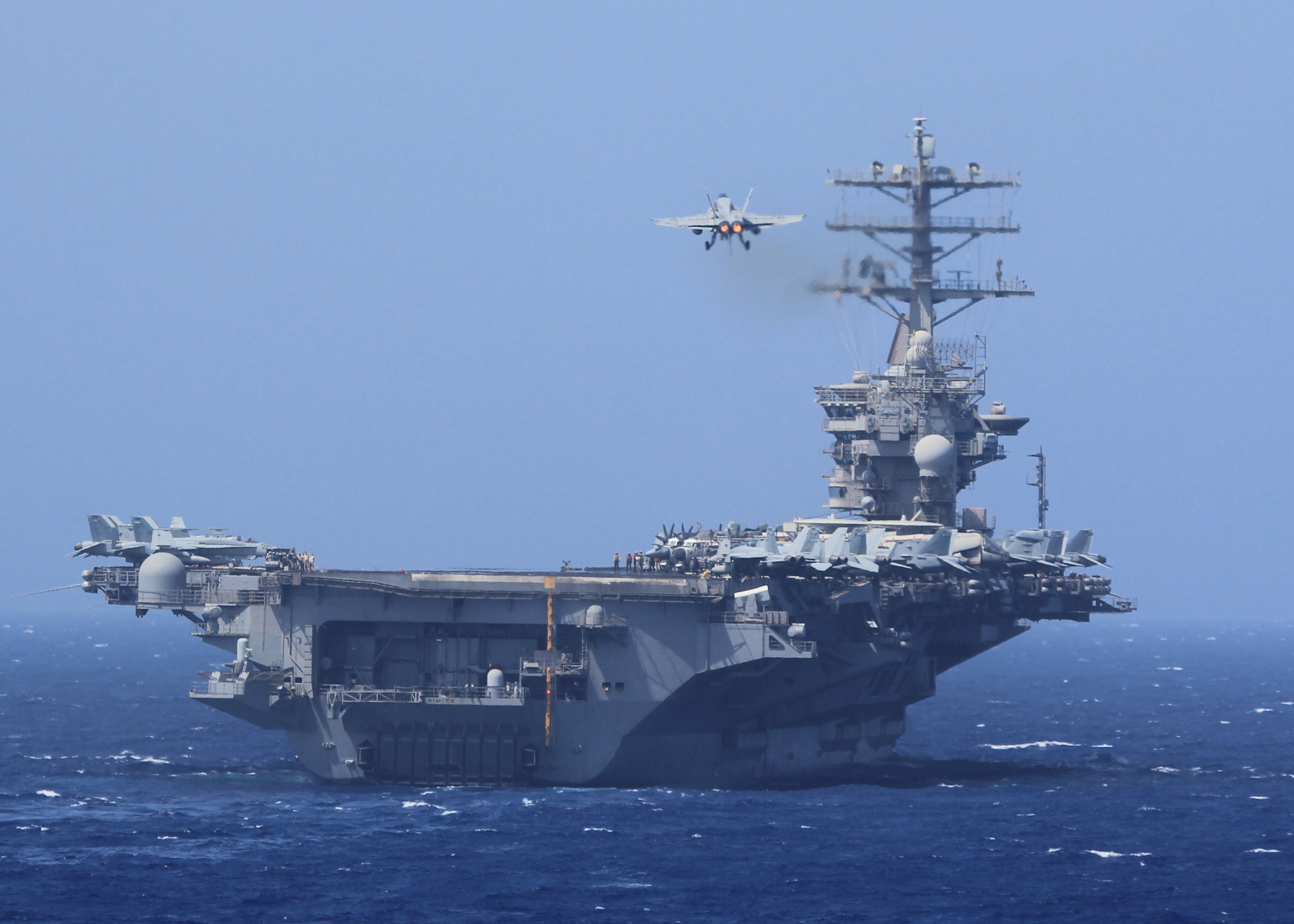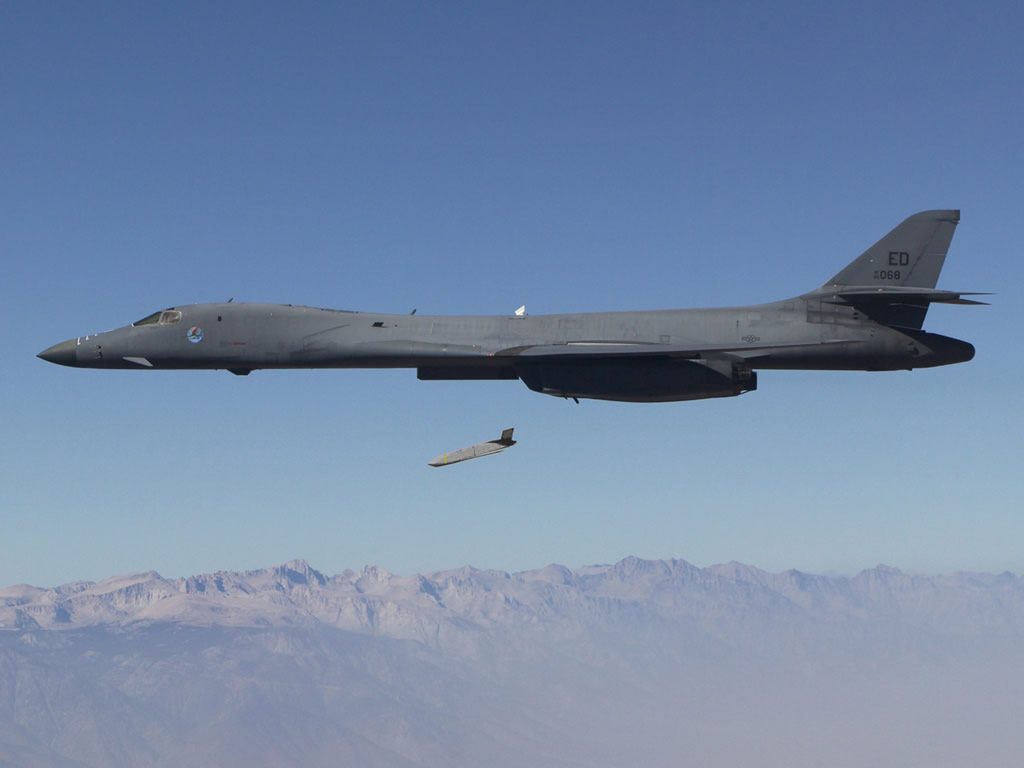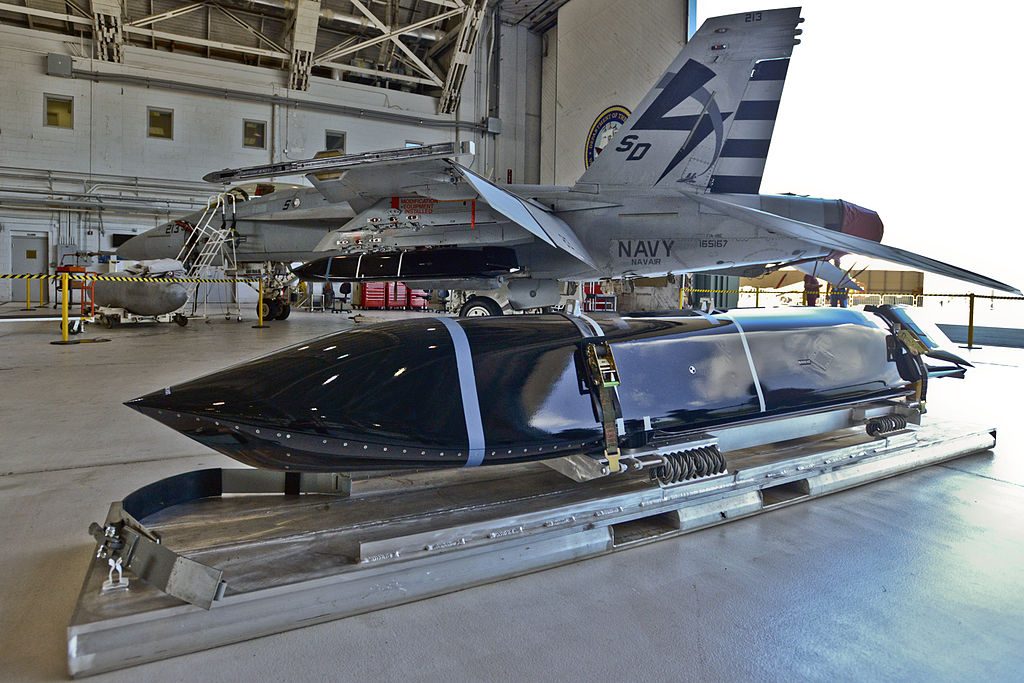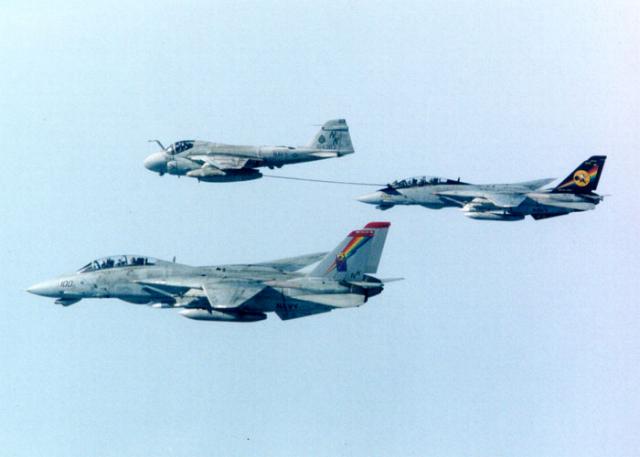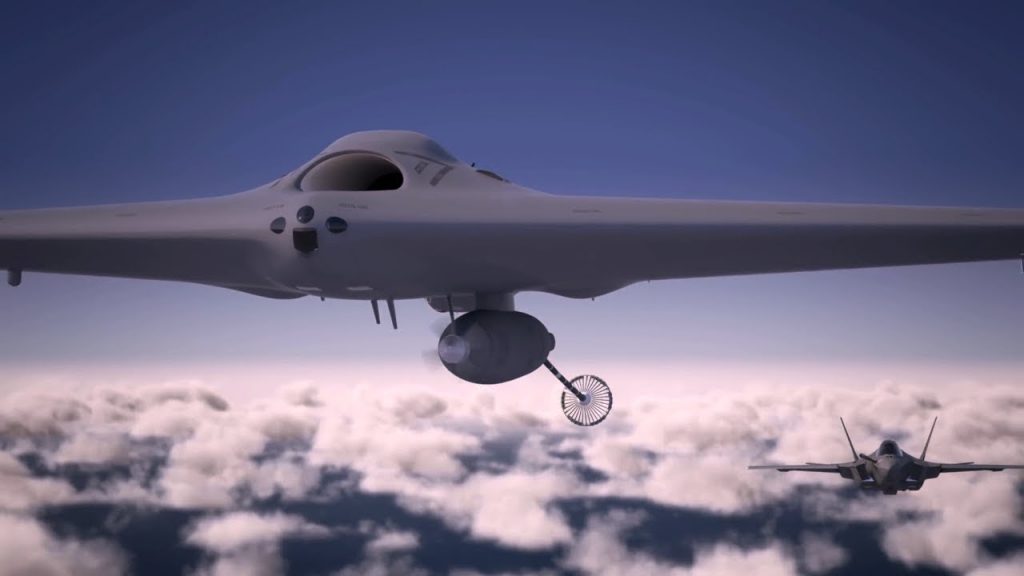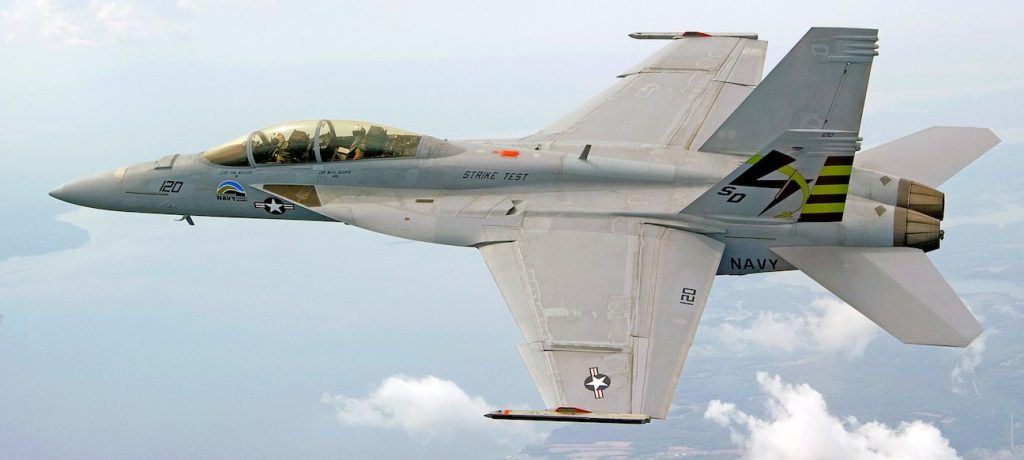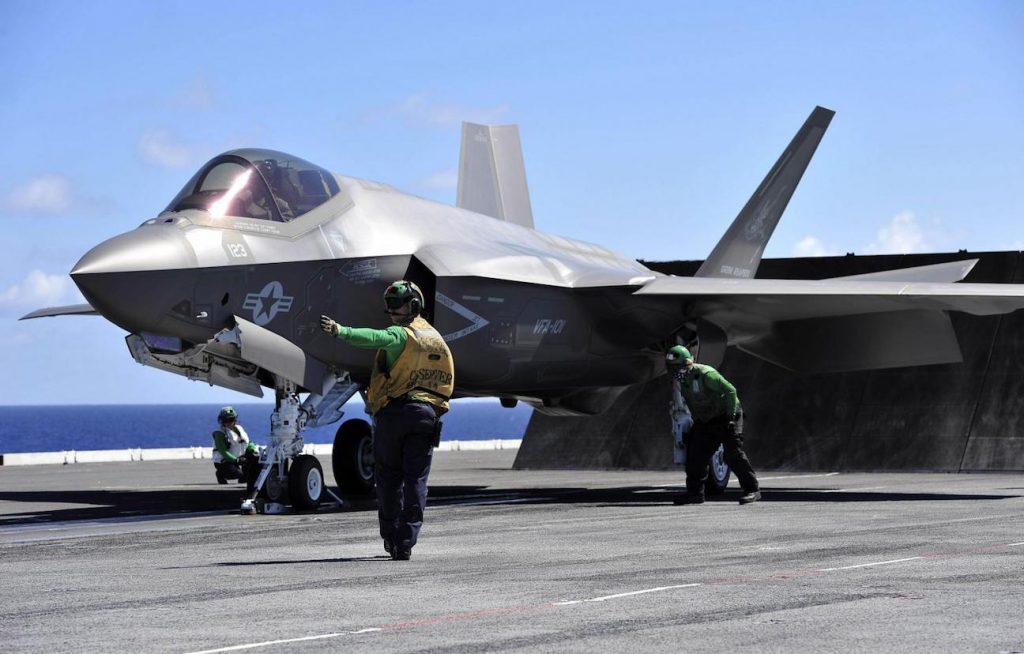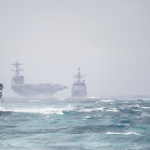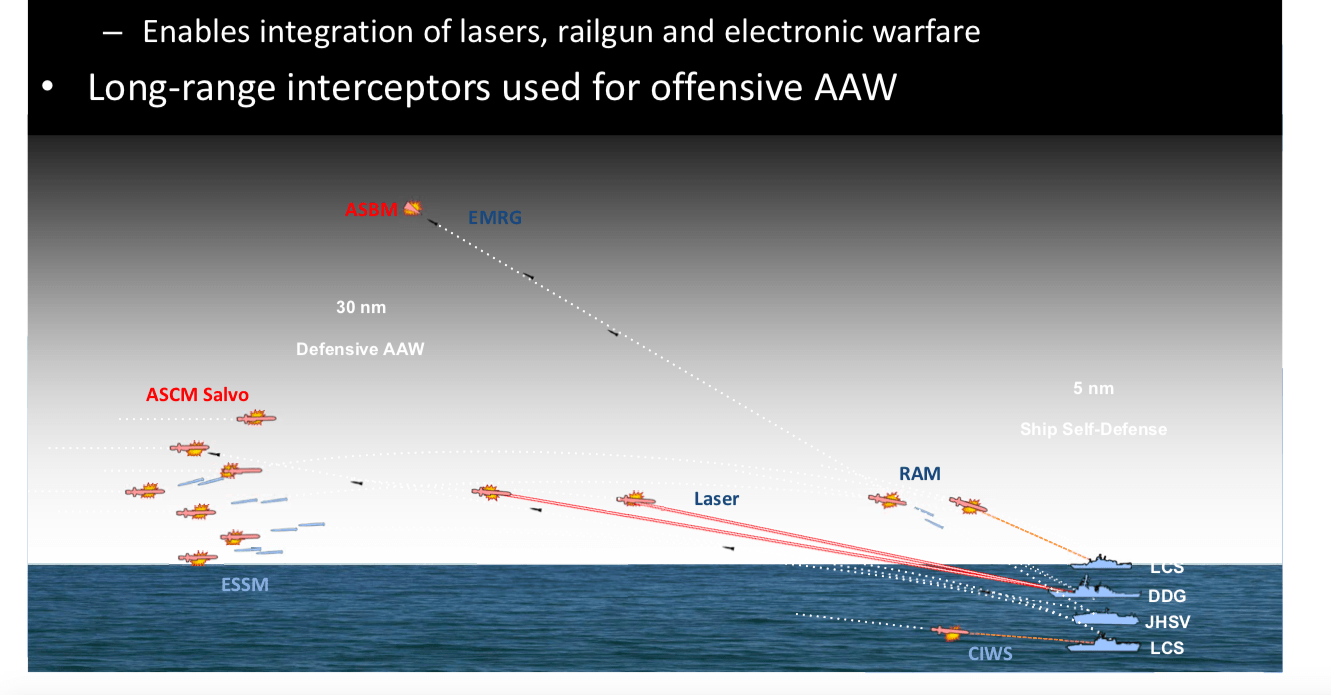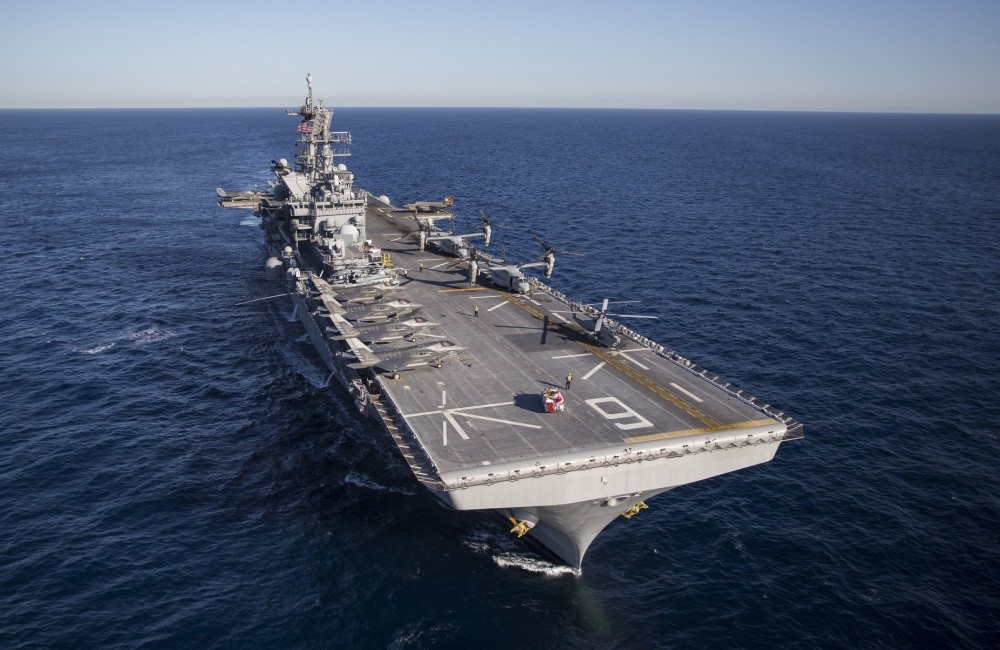Aircraft carriers are nowhere near as vulnerable as popularly believed and are essentially unsinkable except by nuclear-weapons. Modern US carrier can absorb a dozen torpedo hits and remain underway. Naval expert Norman Polmar once told me the only way to finish off a US carrier is to send a missile or two through an open elevator and hope they explode in hanger deck, which has large quantities of fuel. The resulting explosion could do the job.

The US Navy, however, is not counting on the physical hardiness of its carriers to survive. It avoids sending carriers into harm’s way until the anti-carrier threat has been substantially reduced. Cruise missiles will be used to neutralize the enemy’s ashore radars, missile batteries, and airfields, combined with stealth bomber attacks.
In recent years an unfortunate problem has arisen, which at last is being addressed. When carrier air wings had the A-6 Intruder, carriers could strike targets 1500-km distant. The current airwing has F-18 Hornet with a strike radius of 700-km, and probably less when fully loaded. With the arrival of the F-35C, the attack radius increases to 1000-km. (Please see an excellent article on combat radius in theory and in wartime.) F-18s are being equipped with conformal fuel tanks, increasing the radius to about 1000-km. As MQ-25 UAV stealth refuelers enter service, radius will increase further.
Another problem is not being addressed: the shortage of combat aircraft in the carrier air wing. Due to financial stringency, the strike/air defense part of the CAW has shrunk to 40 aircraft, whereas 72 can be easily accommodated, and 90+ with some crowding. Forty strike aircraft means the carriers are severely under-equipped. Also, see this article: It gives the CAW 48 F-18s, but in reality, the number is 40.
But – you will correctly ask – what about the threat posed by the new quiet, conventional submarines and “carrier killer” missiles? The quiet boats do pose a threat – but in confined waters which the Navy will not enter until all threats are neutralized. In the ocean, carrier task groups are difficult to find. The same applies to quiet SSNs, and in any case, the US defends its task groups with its own SSNs, which remain much more capable than any adversary’s. The carrier strike group also has 11 SH-60R, some based on its escort. This provides a formidable ASW capability. Where possible, P-8 fixed-wing aircraft from shore bases will pitch-in to help. Still, further, there are SSNs not attached to the Carrier Strike Group.
The “carrier killer” missile threat requires a complicated discussion which cannot be conducted here. At some point, China and Russia will also have operational hypersonic (Mach 5) anti-ship missiles. Finding a US CSG in the ocean is difficult because the US Navy uses electronic spoofing to creates false imagines of the CSG. Next, the US will break the anti-ship missile’s kill chain at multiple places, starting with the launchers. Last, US CSGs have a major anti-cruise capability thanks to Standard missile; for last-ditch defense, the carriers have four launchers with 8-11 missiles and four Phalanx high-speed guns. The escorts, of course, have 40-50 Standard missiles and last-ditch defense systems. Navy warships carry a substantial active defense decoy capability, as well as passive defense electronic systems.
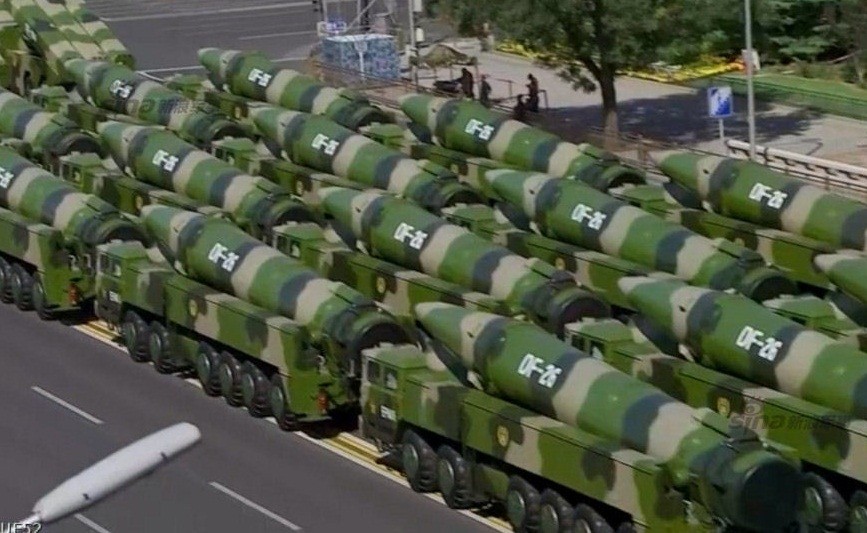
In due time, US Navy carriers will feature laser defenses. 150-KW lasers are ready to deploy, and 300-KW is in development. It is likely lasers between 500-KW and 1-MW is needed for effective anti-ship missile defense. The US Navy developed 1-MW lasers 30-years back, but they took up too much space and required 10-MW of electrical power. Today that would be 3-MW. More important stored energy magazines are becoming operational, overcoming the energy limitation.
At the same time, to remind, the carrier’s air wing under-utilization is not being solved. Today a CSG costs $10+ billion for the ship, $18-billion for six escorts (DDG/SSN) and $6-billion flyaway for its aircraft/helicopters, or $35-billion. It will increase each passing year. No one disagrees that aircraft carriers are without peer when showing the flag or power demonstrations. Yet, not only do we need eight more carrier strike groups to deal with the rise of the Chinese Navy we need to top-off the carrier air wing. Currently, China has a training carrier, one working up, and one launched (L16, L17, and L20). It appears to have two more under construction, including the first nuclear-powered. Its capacity is two simultaneous carriers. The conventionally-power ships take four years for launch.
Intuition tells us to reduce the size of the carriers and have more of them. The Navy counters that – say – two 50, 000-ton carrier groups working together plus escorts may theoretically cost the same as a single 100,000-ton. Ford aircraft carrier, but the ships would be individually less survivable, and the life-cycle costs will be higher. To get a solid grip on this issue is impossible for us amateur enthusiasts.
Sincerely,
Ravi Rikhye
www.John1911.com
“Shooting Guns & Having Fun”
- Ukraine Quick Update 6-20-22 - June 22, 2022
- Mariupol Order of Battle - May 2, 2022
- Ukraine update April 14, 2022 0900 US EDT - April 14, 2022


